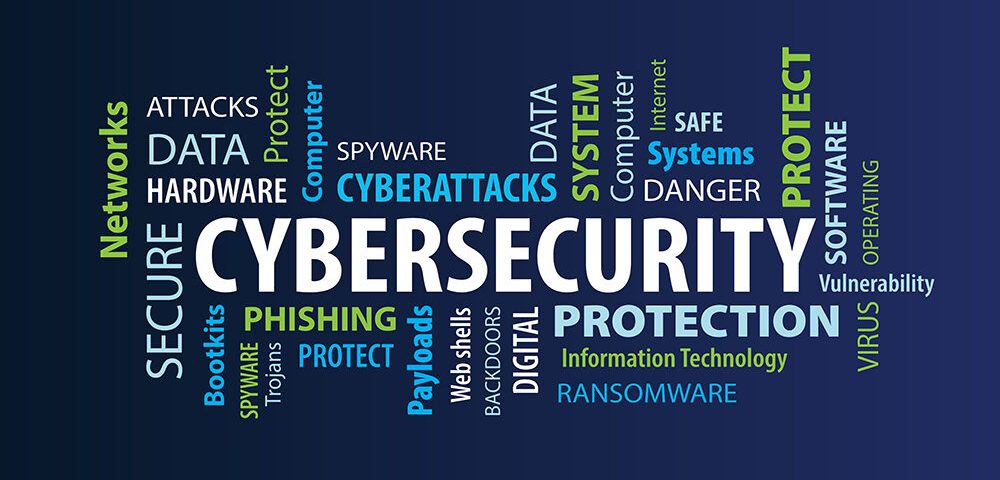Cyber Security Management Services

Cybersecurity is the application devised to defend computer networks, programs, data, and devices from cyber attacks. The aim of cybersecurity is to cut down on the risk of data theft and data disclosures. There are always cyber threats to internet security and the work of cyber security management services is to provide protection from those unwanted threats, incessantly. In other words, it is the protection of internet-connected systems. Cybersecurity is also known as computer security or information technology (IT) security.
The internet is open to all and this makes it quite vulnerable and is exposed to the possibility of being attacked. The work from home, due to the attack of the coronavirus, or hybrid or remote workers too are caught in this vast net of cybercrime. They too are exposed to such malicious practices with company information being stolen and sold to the dark web.
We now know that cyber threat is one such issue that needs the attention of the highest order. But is your business prepared enough to tackle the risks involved?
Your business needs a support system that can provide top-notch services in fighting the criminal minds. This is where the CMS Cybersecurity Consultant plays an essential role. They shield your organization from cyber-attacks by providing a cybersecurity system for networks, servers, remote tablets, laptops, workstations, and all other connected devices.
DDoS attacks, ransomware, malware, phishing, and other threats are on the rise and it is important to not only identify but also deal with these threats with an action plan. CMS first performs a threat health assessment of your computer network and then builds a cybersecurity framework to reduce cyber threats.
Action Plan
CMS’s cyber security management services work on a framework to provide security to businesses. Security Framework consists of 5 key components that are crucial to nullifying cyber threats. They are:
Identify- The Identify is the core functionality of the cyber security framework as it identifies potential risks by learning about all the systems included in the organization. In prioritizing cyber security efforts, CMS makes it important to understand and then manage the vulnerabilities that could be systems, people, assets, data, or capabilities.
Multifactor Authentication
Conduct Regular Backups
Protect Sensitive Data
Regular System Patching
Cyber Awareness Training
Detect- Detect is a procedure of preparing for the dangers within the system. The Detect component is all about developing and implementing procedures to identify the threats of cyber security beforehand. These may include:
Unusual Traffic Irregularities
Maintain and Monitor Logs
MDR (Managed Detection & Response)
EDR (Endpoint Detection & Response)
Respond- Advancing to the next step, Respond means to take action against the detected cyber security threat. Activities are performed to prevent the expansion of the threat and to resolve the incident.
Recover- The final but yet another important function of the security framework. In this, services that were affected due to cyber-attack are put on recovery mode. The function continues with the implementation of improvised plans and reviews of the existing strategies. Key highlights:
Continuity of Recovery Planning processes and procedures
Internal and External Communications with the stakeholders
Disaster Recovery Strategy
Ways to safeguard from cyber attacks
Emails- We often get emails claiming to be a lottery for several thousand or millions of dollars. Warning! Delete those sorts of emails immediately and without opening them. It is highly advisable to ignore such phishing emails and not entertain or indulge further. It is better to escalate such matters with higher authority, raise awareness among employees and protect your company from potential data breaches.
Password: We often tend to keep the same passwords for many services we use like banking, e-commerce, and emails. No! Do not do that, please. It is also advisable to keep renewing your passwords and pins from time to time in order to safeguard yourself and your important documents, data, and finances from hackers.
Multi-Factor Authentication: Multi-Factor or 2-Factor Authentication is a genuine way of getting online protection for many services we use. Most of the services including emails and banking provide an extra layer of protection.
Limit Use Of Social Media: Social media is something that attracts everyone and sort of makes a person addicted to its use. Sharing too much on Facebook, Twitter, Instagram, or other social media platforms is among many ways cybercriminals can gather that personal information. Cyber protection services emphasize the importance of staying alert and browsing the internet judiciously.
Backups, updates, and device protection: Cyber security threat protection groups also advise on backups and updates of your devices. Not everybody does that, especially those who are not so tech-friendly. However, an individual or employee must always consult with the IT department on that front and get the work done.
Device protection is another best practice to protect yourself from those cyber attacks. It’s best to lock your device whenever you are leaving your workstation for tea, coffee, lunch breaks, or meetings and gatherings. Never leave your device unattended.
Internet Security Threats
We come across so many internet security threats that are quite familiar. We hear the
following names and reading about them on a regular basis. If you hear of any of these names,
alert the authorities with immediate effect:
1. Virus
2. Spyware
3. Firmware
4. IP Spoofing
5. Ransomware
6. Phishing
7. Social Engineering
8. Botnets
9. Rootkits
10. SQL Injection
11. Distributed Denial-Of-Service (DDoS) Attack
12. Hardware-Based Attacks
13. Attacks On Virtualization
Types of Cyber Security Management Services
There are five types of cybersecurity or internet security identified by IT security consulting firms.
Critical Infrastructure Protection: Providing security to networks, systems, and services, and preparing to tackle serious threats that involve the critical infrastructure of a nation.
Application Security: We all use apps for our favorite e-commerce, video streaming services, messengers, etc. and security is paramount when developing such applications. The application security process is used to negate online threats.
Network Security: Network security is the process of providing security to computer networks and data.
Cloud Computing Security: Also known as cloud security is a protection provided to cloud-based infrastructure, applications, and data.
Internet of Things (IoT) Security: We live in an era where all devices are connected to each other and it’s becoming important to protect those devices. IoT security focuses on safeguarding connected devices and networks in the internet of things.
Conclusion
CMS Cyber Security Management Services can help in the protection of your business from cyber threats and malicious attacks by identifying vulnerabilities. CMS devises a 5-step framework to provide a protection plan to your network, servers, remote tablets, laptops, workstations, and other devices.



